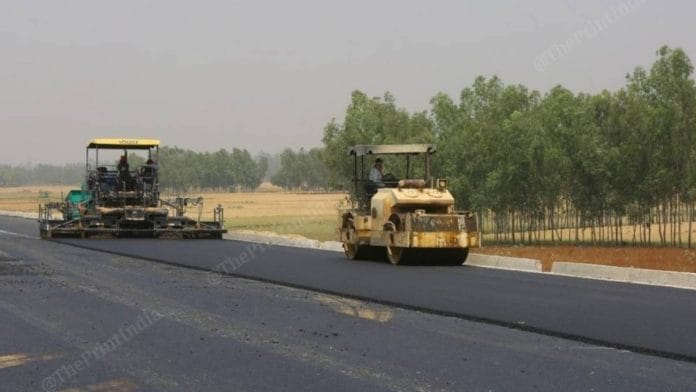Every day, around 460 lives are lost to road crashes in India. Can we truly reduce this shockingly high road crash toll? While most road safety-related practices have emerged from the West, India needn’t look to the ‘first world’ for answers. There is a ‘Make in India’ solution to road safety.
The Road Safety Good Practices in India report, co-authored by the World Bank and SaveLIFE Foundation, showcases effective strategies that are in place across 10 states: Karnataka, Kerala, Maharashtra, Andhra Pradesh, Tamil Nadu, Telangana, Uttar Pradesh, Gujarat, West Bengal, and Odisha.
These initiatives are categorised under the four Es of road safety—Engineering, Enforcement, Education/Engagement, and Emergency Care—and are customised to specific environments, whether corridor-based, city-based, or state-based roads.
For instance, corridor-based interventions have yielded remarkable reductions in fatalities, ranging from 22 percent to 61 percent over periods of three to eight years. Notable examples include the Old Mumbai-Pune highway, where fatalities plummeted by over 60 percent from 2018 to 2021, and the Belgaum-Yaragatti highway in Karnataka, which experienced a 54 percent drop in deaths over three years.
Moreover, the Sabarimala Safe Zone in Kerala achieved near-zero road crash deaths between 2019 and 2021, illustrating the potential for replicating these measures in other high-risk areas like Char Dham.
In urban scenarios, Kolkata stands out with a 52 percent reduction in road fatalities from 2016 to 2021, driven by electronic enforcement and infrastructural improvements.
Also read: India can’t prevent road accidents but it can reduce fatalities—advanced tools, trauma care
‘Make in India’ interventions
The tactics and approaches across the 10 interventions documented skilfully combine the four Es of road safety with institutional strengthening and capacity building.
For the Belgaum-Yaragatti highway project, the Karnataka government created a detailed action plan alongside a road safety budget based on data collected by police and field officials. At 40 major and minor intersections, traffic signs, rumble strips, solar traffic signals, and raised pavement markers were installed. The state police were also trained and equipped with breathalysers, speed guns, digital cameras, interceptor vehicles, reflective jackets, and first-aid boxes. Additionally, a strong focus was placed on bolstering the entire chain of survival—on-site care, in-hospital care, and patient referrals.
SaveLIFE Foundation’s ‘Zero Fatality Corridor’ model on the Old Mumbai-Pune highway, Yamuna expressway, and Mumbai-Pune expressway has significantly mitigated fatalities by using safeguarded medians, improved traffic enforcement, and optimising emergency response systems. On the Old Mumbai-Pune highway, over 300 chevron signs and more than 1,000 road studs were installed to warn road users of oncoming dangerous or sharp curves. Additionally, two Smart Patrolling Vehicles were deployed over 50,000 km to prevent crashes.
On the Yamuna expressway, signboards, crash barriers, road delineators, and other safety measures were installed following a survey to analyse the causes of crashes and deaths occurring on this stretch. The expressway saw a 38 percent decline in fatalities over three years (2019 to 2022). Similarly, the Mumbai-Pune expressway was made safer with tactile edge lines, speed traps, interceptor vehicles, and signage indicating uniform speed limits at the ghat section. The corridor experienced a 40 percent decline in road crash fatalities between 2016 and 2022.
Meanwhile, Tamil Nadu established a Special Task Force, the Tamil Nadu Accident and Emergency Care Initiative, and the Innuyir Kappom Thittam scheme, which ensures cashless treatment for crash victims within the first 48 hours. Odisha also reduced road crash deaths by 4.4 percent in three years (2018-2021) with a minimal investment of Rs 7.2 per capita. Initiatives such as the ‘Vahak’ and Rakshak’ training programmes (for drivers and first responders, respectively) trained nearly 12,500 citizens in crash prevention and first responder care.
Kolkata saw one of the biggest dips in road crash deaths among all Tier-1 cities between 2016 and 2021 (MoRTH 2022). The city’s ‘Safe Drive, Save Life’ campaign included interventions such as Red Light Violation Detection cameras and a ‘No Helmet, No Petrol’ rule for two-wheeler users. Designated trauma care centres were also inaugurated in 46 hospitals (one in each district) of the state.
The Kerala government installed signboards, blinker lights, and polychrome convex mirrors to assist users on the winding roads leading to the Sabarimala temple. Moreover, 15 patrol teams comprising 45 officers were deployed by the Kerala Motor Vehicles Department in vehicles fitted with GPS, wireless communication, fire extinguishers, and safety devices. Patrolling was conducted in eight spells of nine days each. Three 24/7 control rooms with communication facilities were also set up to handle citizens’ concerns on the Sabarimala roads.
The 118-km Hyderabad-Bijapur corridor in Telangana had a crash severity rating of 58.7 in 2014, higher than the national average of 28.5 for the same year. Interventions such as performance-based road contracts, widening curves, mobile barriers, and electronic weighbridges resulted in a 38 percent reduction in deaths from 2014 to 2018.
Also read: Indian drivers are experiencing a ‘myopia epidemic’ — large numbers just can’t see properly
Institutional support, legislative changes
India has ambitiously pledged to halve road crash deaths by 2030, aligning with the United Nations Sustainable Development Goal 3.6.
To accelerate progress toward SDG 3.6, lessons can be drawn from Tamil Nadu’s strategic implementations, the ‘Safe Drive, Save Life’ campaign in Kolkata, and the Zero Fatality Corridor model on the Mumbai-Pune expressway. These initiatives demonstrate the efficacy of combining emergency medical care, road engineering, police enforcement, and safety education in a comprehensive approach.
Nationwide adoption of these proven interventions, supported by institutional backing and integrated into the Motor Vehicles Act of 1988, will solidify the necessary legal framework to enforce safety measures effectively across India.
The question is not if we can tackle this crisis, but how swiftly we can act. With a united front and robust political will, India can turn the tide on road safety and save countless lives each year.
Piyush Tewari is the Founder and CEO, SaveLIFE Foundation. He tweets @piyushtewarii. Views are personal.
(Edited by Prashant)






